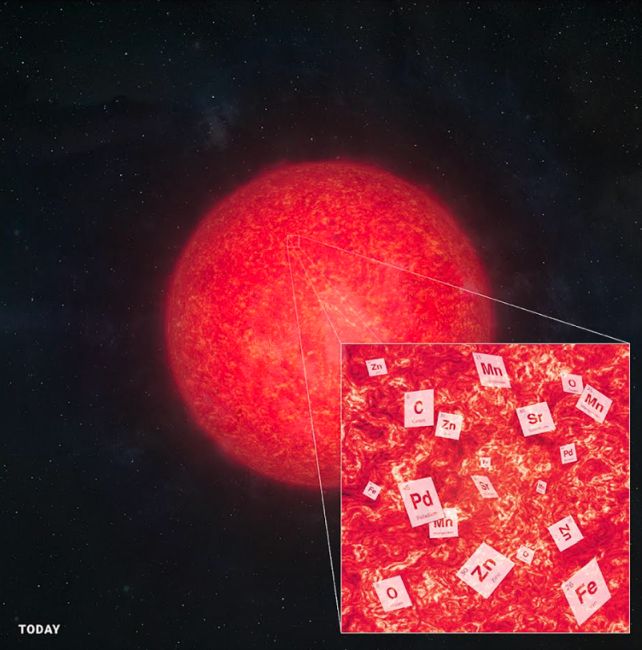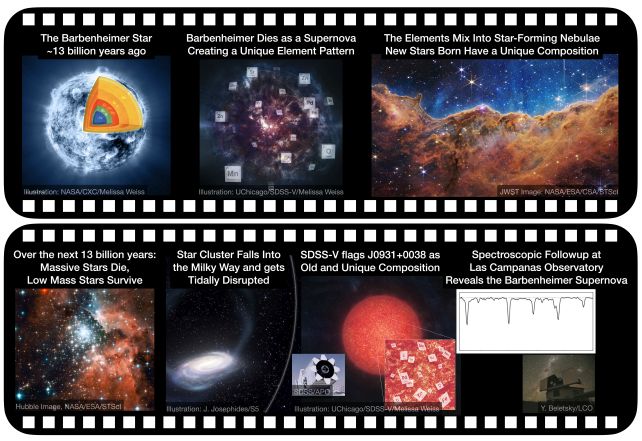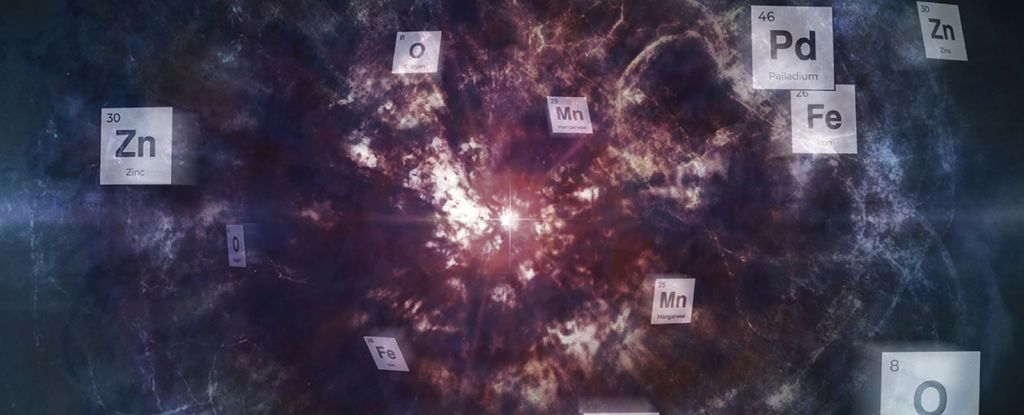Products You May Like
A strange star in the Milky Way bares the signature of a unique explosion of a giant star that once existed billions of years ago in the era of the cosmic dawn.
The chemical composition of the extant star known as J0931+0038 is so weird that it can only be made up of the leftovers of a huge star, one at least 50 times the mass of the Sun, that created the elements before it went supernova.
And this is even weirder. A star that massive should, according to theory, have collapsed directly into a black hole when it died – do not pass supernova, do not collect weird element abundances.
“We’ve never seen anything like this,” says astronomer Alex Ji of the University of Chicago and Sloan Digital Sky Survey (SDSS), who led the research.
“Whatever happened back then, it must have been amazing. We nicknamed [the supernova progenitor] the ‘Barbenheimer Star’ for its spectacular nucleosynthesis.”
The production of most elements in the Universe is the province of stars. After the Big Bang 13.8 billion years ago, when everything cooled down enough for atoms to form, space was filled with a soup of mostly hydrogen, and a bit of helium. This is the stuff from which the first stars were born.
But stars are basically element factories, with several distinct methods of creating new materials in a process known as nucleosynthesis. They are powered by the process of fusion that takes place in their cores, smashing atoms together to form heavier elements.
However, this stops at iron; fusing iron into something heavier uses more energy than it creates, so it’s game over for the star.

As the star explodes, heavier elements are created in the extremely energetic environment of the supernova. In addition to the products of fusion, these elements are ejected out into space, where they are incorporated into subsequent generations of stars.
The chemical abundances in stars can tell us a lot about their own history. Stars born more recently, for instance, have higher abundances of elements heavier than helium, which is a handy tool for telling a star’s age. And the different elements can tell us about the stars that came before – the ones in which the heavier elements were originally forged.
J0931+0038 is a low-mass red giant star, hanging out in the roughly spherical region of space that encloses the disk of the Milky Way known as the galactic halo. A lot of very old, strange stars can be found in the galactic halo, so astronomers often look there for clues about the early Universe.
J0931+0038 was first captured by the SDSS in 1999, but not in color. It wasn’t until 2019 that a follow-up captured the full spectrum of light from the star – the key to identifying its chemical composition, as different elements absorb and re-emit light at specific wavelengths.
The spectrum of J0931+0038 revealed a chemical composition unlike anything ever seen before. It was astonishingly low in elements with odd numbers on the periodic table, like sodium and aluminium, but rich in elements close to iron, like nickel and zinc. And then the abundances of elements heavier than iron, such as strontium and palladium, were much higher than they should have been.

“We sometimes see one of these features at a time, but we’ve never before seen all of them in the same star,” says astronomer Jennifer Johnson of the Ohio State University.
The team figured out that the majority of the metals found in J0931+0038 must have been from one single, extremely metal-poor nucleosynthetic source: a star 50 to 80 times the mass of the Sun that exploded, spewed its guts out into space, and left behind a cloud of material from which J0931+0038 was born.
The fact that such a massive star is expected to gravitationally collapse inwards rather than explode outwards is only part of the problem, though.
“Amazingly, no existing model of element formation can explain what we see,” says astronomer Sanjana Curtis of the University of California, Berkeley, who co-led the research. “It’s not just, ‘oh, you can tweak something here and there and it’ll work out – the whole pattern of elements almost seems self-contradictory.”
It’s a puzzle that, as yet, has no answer. Only finding more such oddballs, and modeling their formation, will reveal how the ‘Barbenheimer’ star lived, died, and left its fingerprints behind for us to puzzle over many eons later.
The team’s research has been accepted into The Astrophysical Journal Letters, and is available on arXiv.
